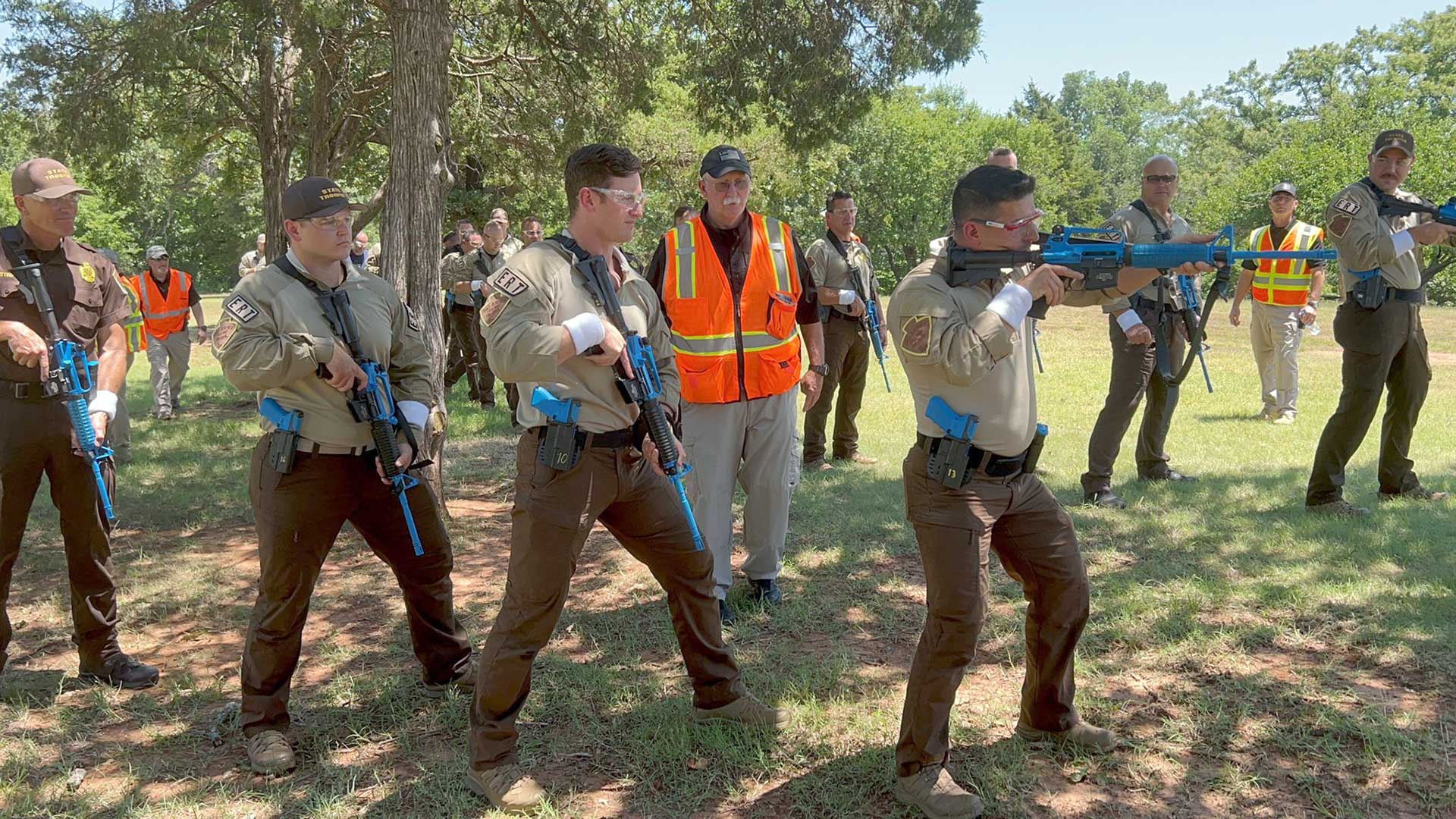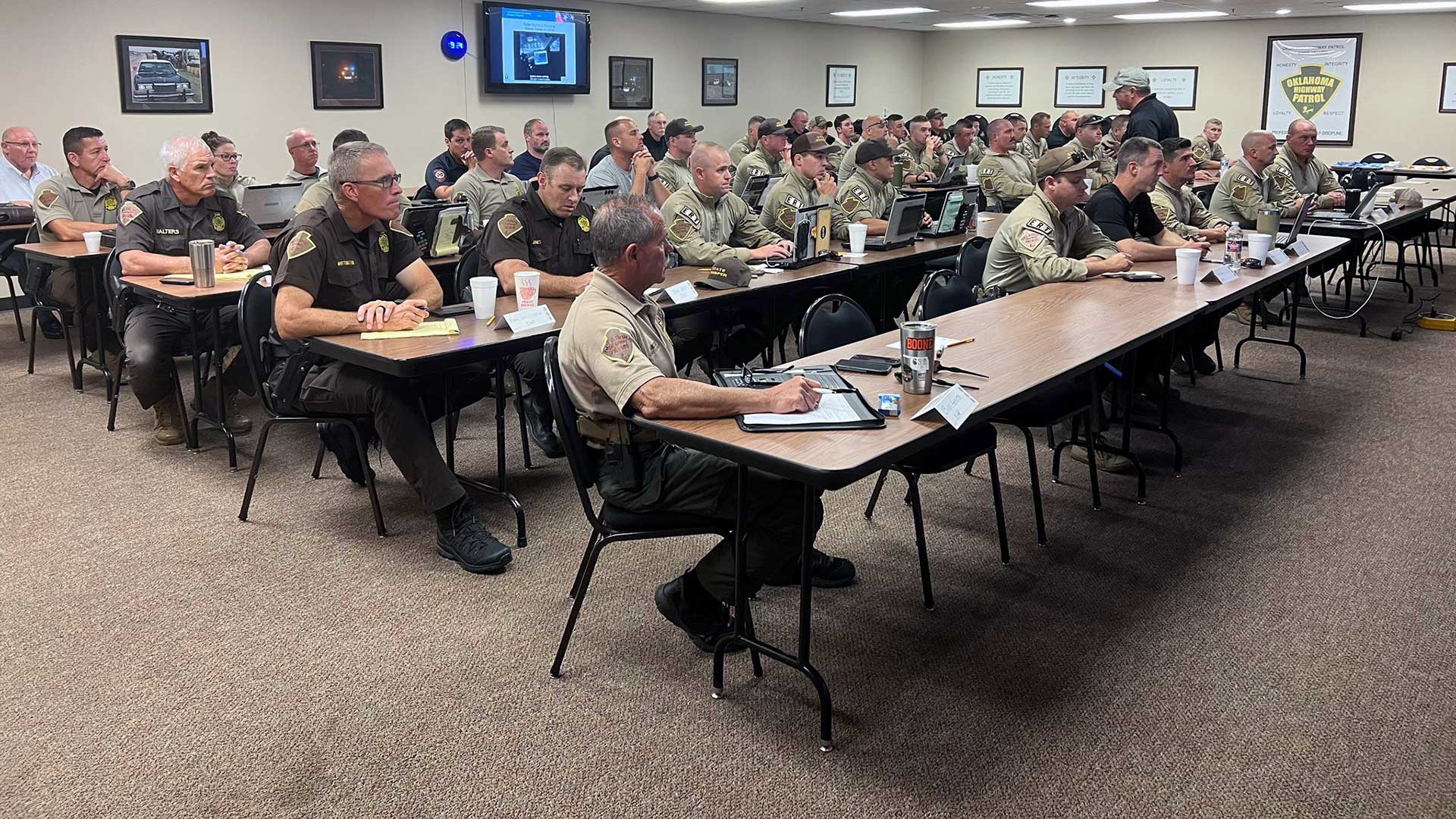
Three weeks after Governor Kevin Stitt issued an executive order enacting a plan to protect Oklahoma students and teachers from violence, state troopers have begun taking part in new active shooter training.
In the wake of the Uvalde school shooting in Texas and other high-profile mass killings across the U.S., Stitt consulted with his state’s top law enforcement officials and created the six-point plan called Mission: Secure Oklahoma Schools (SOS). Among the measures called for by the order are new behavioral training for all teachers, risk and vulnerability assessments for each school, implementing the Rave panic button app in all school districts, and new training for law enforcement to ensure every officer in the state is trained to respond to active shooter events in the same way.

“The executive order that the governor took really is a holistic approach,” Commissioner of Public Safety Tim Tipton said. “How does law enforcement, local school districts, and local communities partner together? How do we use our latest technology for identifying threats, hopefully preventing threats from happening, doing behavioral threat assessments, things like that.”
The order requires all Oklahoma troopers from the Department of Public Safety to complete the active shooter emergency response training by January 1, 2023. The state’s basic academies are required to include the training in their curriculum by January 1, and it will be offered to the rest of the state’s law enforcement officers by July 1 of next year.
In mid-July, troopers from across the state gathered in Oklahoma City to begin the training. While all troopers have already received some form of active shooter training, Tipton said the goal of the new course was to be as accurate, consistent and up to date as possible to reflect evolving threats.
“We want to put them under as much realistic stress in the scenario-based training to have them as fully prepared as much as we can,” he told reporters. “Some of the early active shooter training, just like many law enforcement training around the country, really didn’t address door breaching or have the initial officers trained for that, so that is included in this training.”
In addition to enhanced training, the class also equipped dozens of troopers as designated trainers who would return home to provide the new training to other troopers and law enforcement agencies in their respective areas of the state.





